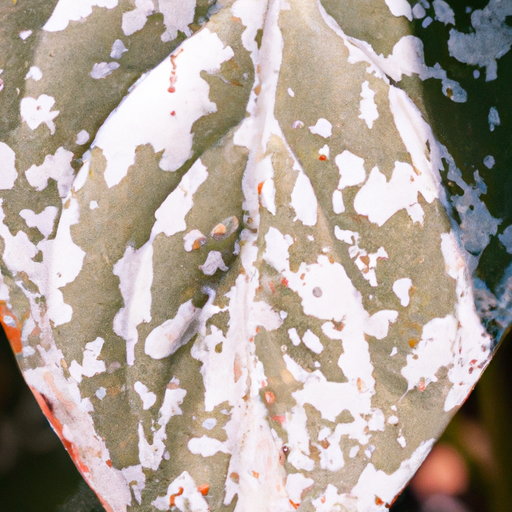Introduction
White rust on plants is a common fungal disease that affects a wide range of plant species. It is caused by various species of fungi, including Albugo candida and Albugo occidentalis. This article will explore the causes, symptoms, and treatment options for white rust on plants.
Causes of White Rust on Plants
White rust is primarily caused by fungal spores that are spread through wind, water, or contaminated soil. These spores can survive for long periods and infect plants when conditions are favorable. Factors that contribute to the development of white rust include high humidity, cool temperatures, and overcrowding of plants.
Symptoms of White Rust on Plants
The symptoms of white rust can vary depending on the plant species affected. However, some common signs to look out for include:
1. White or yellowish pustules: These pustules usually appear on the undersides of leaves and stems. They may resemble small blisters or raised spots.
2. Powdery appearance: As the disease progresses, the pustules may burst, releasing a powdery substance. This powdery appearance is where the name “white rust” comes from.
3. Stunted growth: Infected plants may exhibit stunted growth, with distorted or curled leaves. In severe cases, the plant’s overall health and vigor may decline.
Treatment and Management
While white rust can be challenging to control, there are several treatment and management strategies that can help minimize its impact. Here are some options to consider:
1. Cultural practices: Implementing good cultural practices is crucial in preventing and managing white rust. This includes proper spacing between plants, adequate ventilation, and regular removal of infected plant debris.
2. Fungicides: In severe cases, fungicides may be necessary to control white rust. Consult with a professional or local agricultural extension service to identify the most effective and safe fungicide for your specific plant species.
3. Resistant varieties: Planting resistant varieties can significantly reduce the risk of white rust. Research and choose plant varieties that have been bred to be resistant to this fungal disease.
4. Quarantine and sanitation: If you notice any signs of white rust, it is essential to quarantine the affected plants to prevent further spread. Additionally, regularly clean and sanitize gardening tools and equipment to minimize the risk of contamination.
5. Monitoring and early detection: Regularly inspect your plants for any signs of white rust. Early detection allows for prompt intervention and increases the chances of successful treatment.
Conclusion
White rust on plants can be a frustrating problem for gardeners and farmers alike. Understanding the causes, symptoms, and treatment options is crucial in effectively managing this fungal disease. By implementing proper cultural practices, using fungicides when necessary, and monitoring your plants closely, you can minimize the impact of white rust and ensure the health and vitality of your plants.




